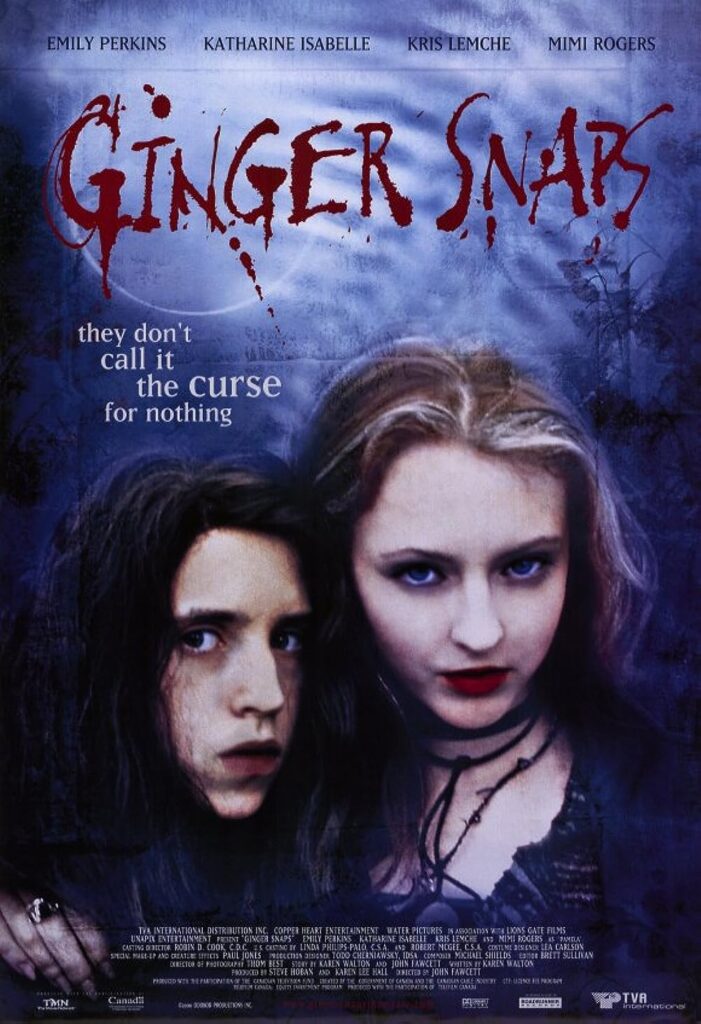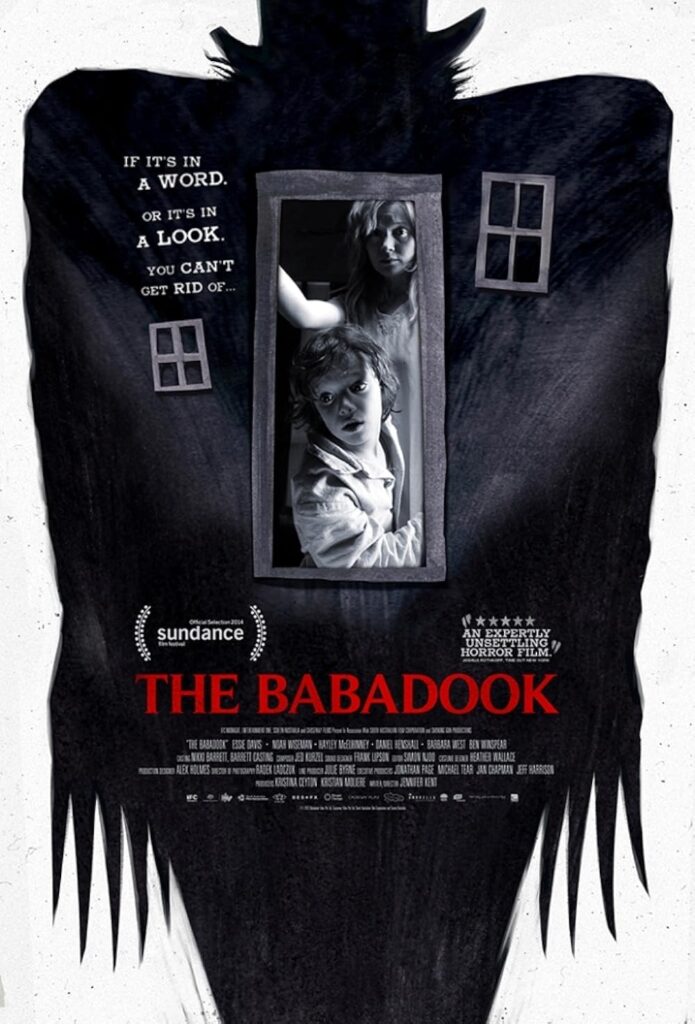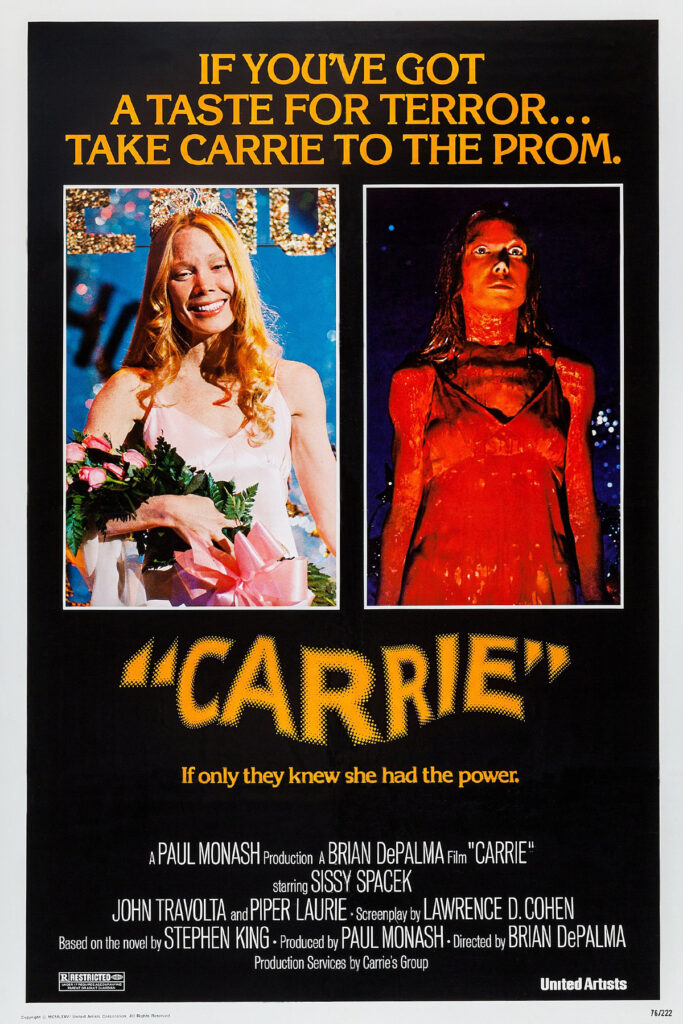Horror movies have long been a source of spine-chilling thrills and adrenaline-pumping scares. But beyond the jump scares and terrifying creatures, these films often carry deeper messages that resonate with audiences. One such theme that has emerged prominently in the horror genre is feminism, challenging traditional gender roles and shining a light on social change.
In this section, we will dive into the feminist themes present in horror movies and how they empower viewers. We will explore how gender representation in these films has evolved, giving rise to strong and complex female characters that subvert stereotypes. By examining the cultural narratives and the emergence of the “final girl” trope, we can understand how horror movies offer commentary on gender inequality and provide a platform for marginalized voices.
Key Takeaways:
- Feminism in horror movies challenges traditional gender roles and explores social change.
- Representation of strong female characters in horror films empowers women and subverts stereotypes.
- The “final girl” trope emerged as a powerful symbol of female resilience and a commentary on gender inequality.
- Horror films often address themes of gender-based violence and highlight the importance of diverse perspectives and underrepresented voices.
- Feminist horror movies serve as a medium for social commentary and inspire conversations about power dynamics and social taboos.
The Evolution of Feminism in Horror
Horror movies have long been a platform for exploring social and cultural narratives, and the genre has also played a significant role in the advancement of women’s rights and the challenging of gender inequality. Through fear, commentary, and complex representations, these films have been able to subvert traditional gender roles and empower women.
One notable element in the evolution of feminism in horror is the emergence of the “final girl” trope. The final girl is typically the last surviving female character who confronts and defeats the killer. This archetype subverts the traditional damsel in distress narrative, showcasing women who are resourceful, resilient, and capable of fighting back against their attackers. The final girl embodies strength and courage, challenging the notion that women are weak and passive victims.

Furthermore, horror movies have incorporated vengeful spirits as a means of addressing gender-based violence. These spirits, often depicted as female, exact revenge on those who have wronged them. By using supernatural elements, these films provide a metaphorical representation of the fear and anger that arises from gender inequality. They offer a commentary on the consequences of mistreating and oppressing women.
“Horror movies have the unique ability to explore societal issues in a way that is both entertaining and thought-provoking. The subversion of gender roles and the depiction of complex representations in horror films challenge societal norms and promote a more inclusive and equal society.” – Film critic Jane Thompson
Overall, the evolution of feminism in horror movies has paved the way for more diverse and inclusive narratives that challenge gender inequality and empower women. These films serve as a reminder that fear can be a catalyst for social change, and that the horror genre has the potential to provoke meaningful discussions and contribute to the ongoing fight for gender equality.
| Feminist Themes in Horror |
Examples |
| Cultural Narratives |
– “The Babadook” by Jennifer Kent
– “Get Out” by Jordan Peele |
| Gender Inequality |
– “Carrie” by Brian De Palma
– “The Witch” by Robert Eggers |
| Complex Representations |
– “Raw” by Julia Ducournau
– “A Girl Walks Home Alone at Night” by Ana Lily Amirpour |
| Subversion of Gender Roles |
– “Ginger Snaps” by John Fawcett
– “American Mary” by Jen Soska and Sylvia Soska |
| Vengeful Spirits |
– “The Ring” by Gore Verbinski
– “Ju-On: The Grudge” by Takashi Shimizu |
Examples of Feminist Horror Films
In this section, we will showcase examples of feminist horror films that offer complex representations of gender and power dynamics. These films challenge traditional stereotypes and provide a platform for underrepresented voices from marginalized communities. We will discuss two notable examples: Jennifer Kent’s “The Babadook” and Jordan Peele’s “Get Out”.
“The Babadook” is a psychological horror film that explores themes of motherhood and female trauma. The film follows single mother Amelia as she battles her inner demons and confronts the supernatural entity known as the Babadook. Jennifer Kent masterfully uses horror elements to delve into the power dynamics of motherhood, addressing the complexities and challenges faced by women in society.

The film subverts traditional gender roles by portraying Amelia as a complex and multi-dimensional character, defying the stereotypical damsel-in-distress trope commonly seen in horror movies. Her journey serves as a powerful metaphor for the strength and resilience of women.
“The Babadook challenges the notion of the ‘hysterical’ woman and confronts the societal expectations of motherhood, showcasing the inherent strength and determination of mothers. Jennifer Kent’s portrayal of Amelia is a refreshing departure from the one-dimensional female characters often seen in horror films.” – Film Critic
Jordan Peele’s “Get Out”
“Get Out” is a groundbreaking horror film that addresses race, identity, and the black experience in America. Jordan Peele skillfully weaves social commentary into a thrilling narrative, challenging stereotypes and exposing the subtle power dynamics that exist within society.
The film follows Chris, a young black man, as he visits the family of his white girlfriend Rose. Peele masterfully uses horror elements to explore the anxieties and fears faced by people of color in predominantly white spaces. “Get Out” serves as an important reminder of the importance of diversity and the need for underrepresented voices to be heard in the horror genre.
“‘Get Out’ is a thought-provoking film that not only entertains but also sparks critical conversations about race and privilege. Jordan Peele’s directorial debut showcases the transformative potential of horror as a tool for social change and representation.” – Film Critic
In conclusion, Jennifer Kent’s “The Babadook” and Jordan Peele’s “Get Out” are prime examples of feminist horror films that challenge societal norms and power dynamics. These films provide a platform for underrepresented voices from marginalized communities and pave the way for greater diversity in the genre. Through their thought-provoking narratives, they encourage audiences to reevaluate conventional beliefs and embrace a more progressive and inclusive approach to storytelling.
Empowering Women Through Fear: Conclusion
Feminist themes in horror movies have proven to be a powerful tool for social commentary, addressing important issues such as LGBTQ+ representation, violence, gore, and societal taboos. By exploring power dynamics and challenging traditional gender roles, these films have the ability to drive social change and empower audiences.

Through the lens of horror, filmmakers have been able to provide a platform for social commentary unlike any other genre. They delve into topics that society often finds uncomfortable or taboo, forcing us to confront our fears and examine the power dynamics that exist in our world.
By incorporating feminist themes into horror movies, filmmakers can shed light on the struggles and triumphs of marginalized communities, while also subverting stereotypes and offering diverse and complex representations. This opens up opportunities for underrepresented voices to be heard and seen in the film industry.
As the horror genre continues to evolve, it is crucial to recognize the social change it can inspire. By harnessing the power of fear, these movies challenge societal norms, push boundaries, and provide a space for feminist themes to thrive. Through social commentary and thought-provoking narratives, horror movies have the potential to create lasting impact and empower women both on and off the screen.
FAQ
What are feminist themes in horror movies?
Feminist themes in horror movies refer to the exploration and critique of gender roles, social change, and representation of strong female characters. These themes challenge traditional norms and empower women through fear.
How do horror movies act as a platform for social change?
Horror movies have the ability to address societal issues and provoke thought. By subverting stereotypes and power dynamics, they provide social commentary on topics such as gender inequality, marginalized communities, and the underrepresentation of diverse voices.
What is the evolution of feminism in horror movies?
The evolution of feminism in horror movies involves the use of cultural narratives, fear, and commentary to challenge gender inequality and societal norms. This includes the emergence of the “final girl” trope and the exploration of vengeful spirits as a means of addressing gender-based violence.
Can you provide examples of feminist horror films?
Yes, two notable examples are Jennifer Kent’s “The Babadook,” which explores motherhood and female trauma, and Jordan Peele’s “Get Out,” which comments on race, identity, and the black experience. Both films showcase diverse voices and offer complex representations of gender and power dynamics.
What is the significance of feminist themes in horror movies?
Feminist themes in horror movies provide social commentary on topics such as LGBTQ+ issues, violence, gore, and societal taboos. They empower audiences by challenging societal norms and driving social change through the exploration of gender roles and the representation of strong female characters.
Exploring the Feminist Themes in Horror Movies: Empowerment Through Fear
Horror movies have long been a source of spine-chilling thrills and adrenaline-pumping scares. But beyond the jump scares and terrifying creatures, these films often carry deeper messages that resonate with audiences. One such theme that has emerged prominently in the horror genre is feminism, challenging traditional gender roles and shining a light on social change.
In this section, we will dive into the feminist themes present in horror movies and how they empower viewers. We will explore how gender representation in these films has evolved, giving rise to strong and complex female characters that subvert stereotypes. By examining the cultural narratives and the emergence of the “final girl” trope, we can understand how horror movies offer commentary on gender inequality and provide a platform for marginalized voices.
Key Takeaways:
The Evolution of Feminism in Horror
Horror movies have long been a platform for exploring social and cultural narratives, and the genre has also played a significant role in the advancement of women’s rights and the challenging of gender inequality. Through fear, commentary, and complex representations, these films have been able to subvert traditional gender roles and empower women.
One notable element in the evolution of feminism in horror is the emergence of the “final girl” trope. The final girl is typically the last surviving female character who confronts and defeats the killer. This archetype subverts the traditional damsel in distress narrative, showcasing women who are resourceful, resilient, and capable of fighting back against their attackers. The final girl embodies strength and courage, challenging the notion that women are weak and passive victims.
Furthermore, horror movies have incorporated vengeful spirits as a means of addressing gender-based violence. These spirits, often depicted as female, exact revenge on those who have wronged them. By using supernatural elements, these films provide a metaphorical representation of the fear and anger that arises from gender inequality. They offer a commentary on the consequences of mistreating and oppressing women.
Overall, the evolution of feminism in horror movies has paved the way for more diverse and inclusive narratives that challenge gender inequality and empower women. These films serve as a reminder that fear can be a catalyst for social change, and that the horror genre has the potential to provoke meaningful discussions and contribute to the ongoing fight for gender equality.
– “Get Out” by Jordan Peele
– “The Witch” by Robert Eggers
– “A Girl Walks Home Alone at Night” by Ana Lily Amirpour
– “American Mary” by Jen Soska and Sylvia Soska
– “Ju-On: The Grudge” by Takashi Shimizu
Examples of Feminist Horror Films
In this section, we will showcase examples of feminist horror films that offer complex representations of gender and power dynamics. These films challenge traditional stereotypes and provide a platform for underrepresented voices from marginalized communities. We will discuss two notable examples: Jennifer Kent’s “The Babadook” and Jordan Peele’s “Get Out”.
Jennifer Kent’s “The Babadook“
“The Babadook” is a psychological horror film that explores themes of motherhood and female trauma. The film follows single mother Amelia as she battles her inner demons and confronts the supernatural entity known as the Babadook. Jennifer Kent masterfully uses horror elements to delve into the power dynamics of motherhood, addressing the complexities and challenges faced by women in society.
The film subverts traditional gender roles by portraying Amelia as a complex and multi-dimensional character, defying the stereotypical damsel-in-distress trope commonly seen in horror movies. Her journey serves as a powerful metaphor for the strength and resilience of women.
Jordan Peele’s “Get Out”
“Get Out” is a groundbreaking horror film that addresses race, identity, and the black experience in America. Jordan Peele skillfully weaves social commentary into a thrilling narrative, challenging stereotypes and exposing the subtle power dynamics that exist within society.
The film follows Chris, a young black man, as he visits the family of his white girlfriend Rose. Peele masterfully uses horror elements to explore the anxieties and fears faced by people of color in predominantly white spaces. “Get Out” serves as an important reminder of the importance of diversity and the need for underrepresented voices to be heard in the horror genre.
In conclusion, Jennifer Kent’s “The Babadook” and Jordan Peele’s “Get Out” are prime examples of feminist horror films that challenge societal norms and power dynamics. These films provide a platform for underrepresented voices from marginalized communities and pave the way for greater diversity in the genre. Through their thought-provoking narratives, they encourage audiences to reevaluate conventional beliefs and embrace a more progressive and inclusive approach to storytelling.
Empowering Women Through Fear: Conclusion
Feminist themes in horror movies have proven to be a powerful tool for social commentary, addressing important issues such as LGBTQ+ representation, violence, gore, and societal taboos. By exploring power dynamics and challenging traditional gender roles, these films have the ability to drive social change and empower audiences.
Through the lens of horror, filmmakers have been able to provide a platform for social commentary unlike any other genre. They delve into topics that society often finds uncomfortable or taboo, forcing us to confront our fears and examine the power dynamics that exist in our world.
By incorporating feminist themes into horror movies, filmmakers can shed light on the struggles and triumphs of marginalized communities, while also subverting stereotypes and offering diverse and complex representations. This opens up opportunities for underrepresented voices to be heard and seen in the film industry.
As the horror genre continues to evolve, it is crucial to recognize the social change it can inspire. By harnessing the power of fear, these movies challenge societal norms, push boundaries, and provide a space for feminist themes to thrive. Through social commentary and thought-provoking narratives, horror movies have the potential to create lasting impact and empower women both on and off the screen.
FAQ
What are feminist themes in horror movies?
Feminist themes in horror movies refer to the exploration and critique of gender roles, social change, and representation of strong female characters. These themes challenge traditional norms and empower women through fear.
How do horror movies act as a platform for social change?
Horror movies have the ability to address societal issues and provoke thought. By subverting stereotypes and power dynamics, they provide social commentary on topics such as gender inequality, marginalized communities, and the underrepresentation of diverse voices.
What is the evolution of feminism in horror movies?
The evolution of feminism in horror movies involves the use of cultural narratives, fear, and commentary to challenge gender inequality and societal norms. This includes the emergence of the “final girl” trope and the exploration of vengeful spirits as a means of addressing gender-based violence.
Can you provide examples of feminist horror films?
Yes, two notable examples are Jennifer Kent’s “The Babadook,” which explores motherhood and female trauma, and Jordan Peele’s “Get Out,” which comments on race, identity, and the black experience. Both films showcase diverse voices and offer complex representations of gender and power dynamics.
What is the significance of feminist themes in horror movies?
Feminist themes in horror movies provide social commentary on topics such as LGBTQ+ issues, violence, gore, and societal taboos. They empower audiences by challenging societal norms and driving social change through the exploration of gender roles and the representation of strong female characters.
Table of Contents
Related Posts
OpenAI fires co-founder and CEO Sam Altman for allegedly lying to company board
Learn More »Domestic Abuse Revelation by Miss Kansas Sparks Mixed Reactions Online
Learn More »The Charmed Life of Madison Elizabeth McMahon: Navigating Fame and Fortune
Learn More »